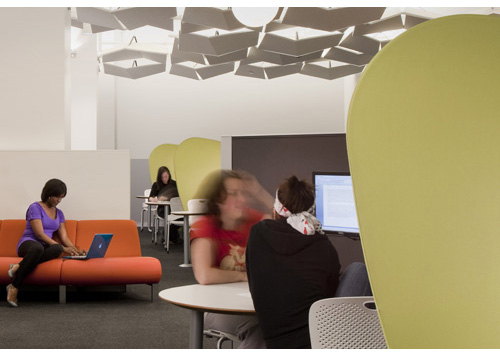Social Media & Higher Education
To the list of sectors that are being profoundly transformed by the explosive growth of social media, we can add one more: higher education.
That’s not to say that courses with titles like “Facebook 101” and “Social Constructs of Twitter” have suddenly appeared on curricula around the country. The transformation at higher learning institutions is certainly less structured, yet decidedly more profound.
Stand at the front of a college lecture hall right before the start of class and look around: more often than not, you’ll see heads that are bowed in rapt attention toward smart phones, laptops, iPads and the equivalent. Certainly, the presence of personal technology in the classroom isn’t new. But we have reached a tipping point in which technology is not only omnipresent in the learning environment, but powerfully influential.
The way that students learn — how they interact with the instructor, with each other, with the course material itself — has already begun to evolve. The extreme popularity of social media sites like Facebook is but one indication that the days of “sage on the stage” are ending.
The millennial generation grew up with the Internet, and they’re savvy enough to expect colleges and universities to be as plugged-in as they are. Students today demand instant gratification. Who needs a card catalog when you have Wikipedia at your fingertips? Instructors everywhere are still trying to figure out how they can leverage such tools in the classroom.
If the pedagogical model is changing, so must the way in which we design learning environments. What does it mean for a smart classroom to be truly “smart”? How can we design learning spaces that are specific enough to address the current problem, yet that are also flexible enough to accommodate inevitable change? Because learning is hardly limited to the lecture hall, I’m referring not only to classroom design, but also libraries, computer labs, and all of those squishy “in-between spaces” that dot every college campus.
The question is no longer whether the social networking phenomenon will alter the face of education, but rather how fast and to what end. How can we respond to this change? We can start by listening — to clients, to students and to experts. Opening up a Facebook account might not be a bad idea, either.
 |
Michael Hanley is a designer in the education practice at Gensler’s Chicago office and has a background in journalism. He’s interested in the unique design opportunities presented by urban college campuses such as Columbia College Chicago, and finding innovative ways to connect higher learning institutions with speculative development enterprises. Contact him at michael_hanley@gensler.com |

 Michael Hanley
Michael Hanley 

Reader Comments (1)